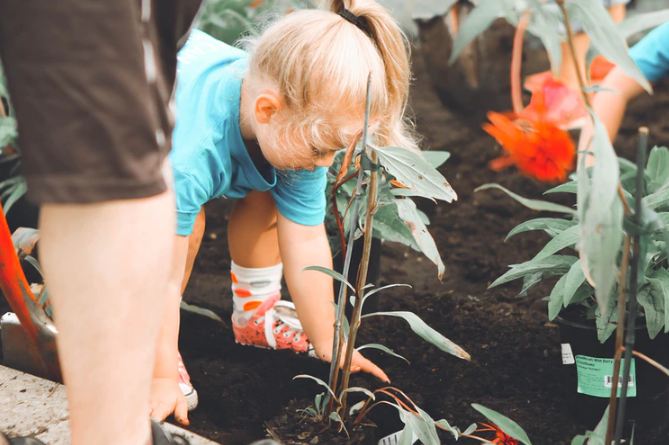Sustainable Fashion: The Importance of High-Quality Clothes for Kids
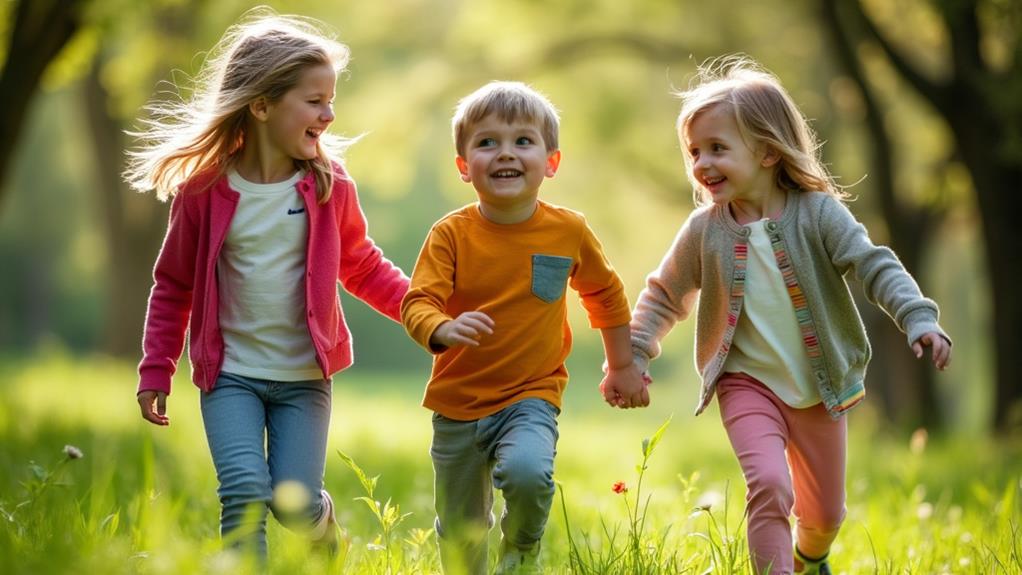
Sustainable fashion for kids emphasizes the importance of high-quality clothes made from eco-friendly materials. These garments protect your child from harmful chemicals and promote responsible consumption. Investing in durable, ethical brands positively impacts your child's health and the environment. Choosing sustainable options fosters environmental stewardship in the next generation. Wondering how this choice benefits both your wallet and the planet?
Understanding Sustainable Fashion
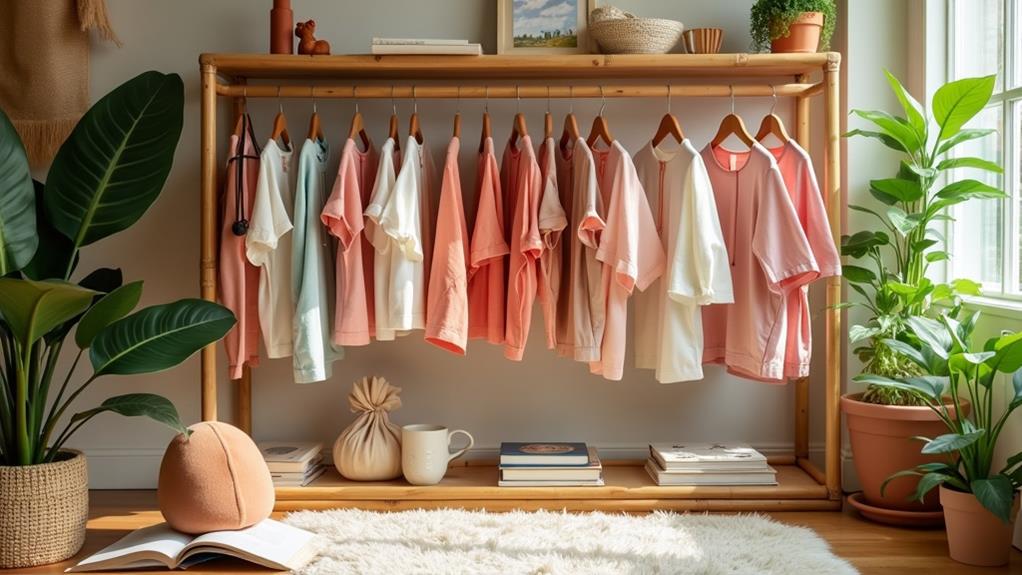
Sustainable fashion, a growing trend in the clothing industry, emphasizes eco-friendly materials like organic cotton and hemp. Choosing sustainable clothing for your children prioritizes both their health and the planet's well-being. Organic fabrics reduce exposure to harmful chemicals, creating a safer environment for your little ones. This choice fosters a healthier lifestyle and promotes environmental responsibility from a young age.
In addition to being eco-friendly, sustainable fashion is often synonymous with high quality. These garments are designed to be durable, withstanding the daily wear and tear that children's clothing typically endures. This durability means fewer replacements, reducing waste and saving money in the long run. The fashion industry's shift towards sustainable practices also includes ethical labor practices, ensuring that workers are fairly compensated and work in safe conditions. This approach supports individual workers and uplifts entire communities.
Benefits of High-Quality Clothes
High-quality children's clothing offers numerous benefits beyond aesthetics. Opting for such garments means choosing durable materials that can withstand the wear and tear of active kids, reducing the need for frequent replacements and saving money in the long run.
Sustainable fashion brands often use non-toxic and organic materials, which are gentler on your child's skin, minimizing the risk of allergies and irritation. Healthier skin leads to happier children. Additionally, these clothes often feature superior craftsmanship and timeless designs, making them suitable for passing down to younger siblings or reselling, thereby reducing waste and promoting a sustainable wardrobe.
Investing in well-made clothing ensures better fit and longevity, allowing your child to enjoy improved comfort and extended use across various growth stages. Moreover, high-quality children's clothing typically comes from ethical production practices, supporting fair labor conditions and fostering a more responsible fashion industry. By choosing such brands, you contribute to a positive impact on both your family and the planet, embracing immediate and long-term benefits.
Choosing Eco-Friendly Materials
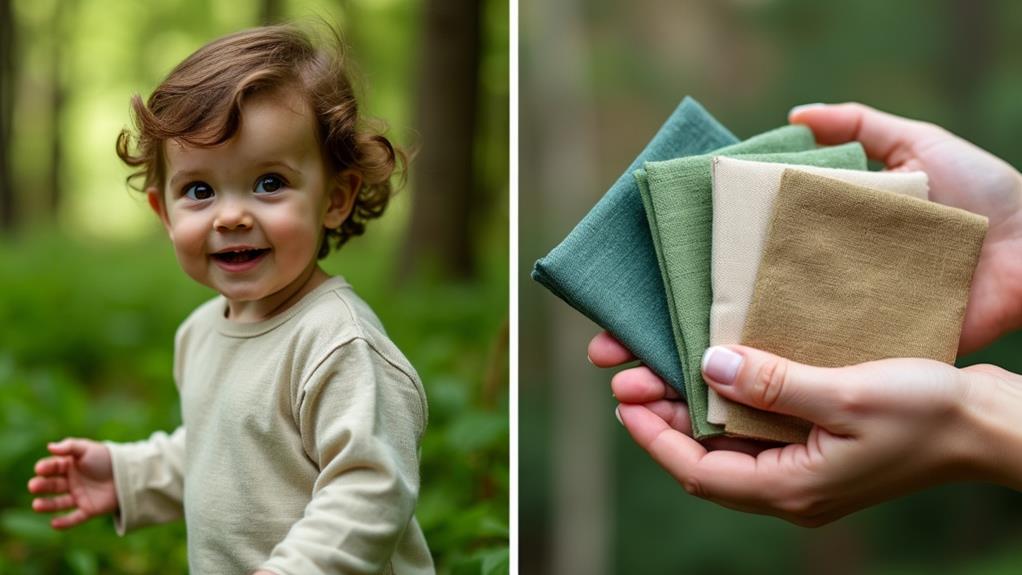
When selecting eco-friendly materials for children's clothing, opt for organic cotton, linen, hemp, and bamboo, as they are cultivated without harmful chemicals. Certifications like GOTS and OEKO-TEX ensure products adhere to high environmental and safety standards. Additionally, consider clothing made from recycled materials to help reduce landfill waste and lower the carbon footprint associated with fabric production.
Key Sustainable Materials
Choosing eco-friendly materials for kids' clothing significantly impacts both the environment and your child's well-being. Opting for sustainable materials like organic cotton ensures that no harmful pesticides or GMOs come into contact with your child's skin. This makes organic cotton a gentle and eco-friendly fabric, ideal for young ones.
Linen, derived from flax, is another excellent choice. It requires significantly less water than conventional cotton and is highly durable, ensuring your child's clothes last longer. Bamboo, a rapidly renewable resource, produces soft, breathable, and hypoallergenic fabrics, making it perfect for sensitive skin.
Hemp, with its low carbon footprint, minimal water usage, and natural resistance to mold and UV light, stands out as an exceptional option for kids' apparel. These materials not only support a healthier planet but also provide high-quality clothing for your children.
When selecting eco-friendly fabrics, look for certifications like GOTS (Global Organic Textile Standard). These standards help you make informed choices, ensuring that your child's clothes are both safe and environmentally responsible. By choosing sustainable materials, you're contributing to a healthier planet and ensuring your child's well-being.
Certifications and Standards
Navigating sustainable fashion for kids can be daunting, but certifications and standards simplify the process of identifying genuinely eco-friendly options. Certifications like GOTS (Global Organic Textile Standard) ensure that clothing is crafted from organic fibers and produced using environmentally and socially responsible methods, providing assurance about the sustainability of the materials.
The OEKO-TEX certification is especially important for children's clothing, as it signifies that textiles have been tested for harmful substances and are safe for sensitive skin. Choosing materials with this certification prioritizes your child's health.
Fair Trade certification guarantees that products are made under fair labor conditions, ensuring workers are treated ethically and compensated fairly, which is crucial for promoting sustainable practices within the fashion industry.
Using recycled materials is another key aspect of sustainable clothing. Certifications like the Recycled Claim Standard help identify clothing that reduces waste and supports environmental sustainability.
Key certifications to look for include:
- GOTS (Global Organic Textile Standard)
- OEKO-TEX certification
- Fair Trade certification
- Recycled Claim Standard
Impact on Children's Health
Organic cotton shirts and bamboo onesies aren't just trendy; they're a healthier choice for your child's skin. Sustainable clothing made from organic materials significantly reduces your child's exposure to harmful chemicals and pesticides, which can cause skin allergies and irritations. These durable garments withstand wear and tear, meaning fewer purchases and less waste, promoting responsible consumption.
Eco-friendly clothing provides better air circulation, keeping your child's skin comfortable and reducing the risk of sensitivities. By choosing sustainable clothing, you're ensuring your child's wardrobe is free from toxic chemicals, ultimately supporting their respiratory health and reducing environmental impact.
Consider these benefits:
| Benefit | Impact on Children's Health | Emotional Impact |
|---|---|---|
| Reduced chemical exposure | Fewer skin irritations | Peace of mind for parents |
| Improved durability | Longer-lasting clothes | Financial relief |
| Better air circulation | Improved skin comfort | Happier children |
Sustainable fashion practices protect your child's health and foster awareness about environmental issues and responsible consumption from an early age. By investing in eco-friendly clothing, you're setting a precedent for healthier choices, benefiting both your children and the planet.
Supporting Ethical Brands

Prioritizing your child's health with sustainable clothing also means supporting ethical brands that emphasize quality and fairness. Choosing these brands ensures your kids wear clothes made from high-quality materials, reducing their exposure to harmful chemicals and promoting healthier skin.
Ethical brands prioritize fair labor practices, ensuring that workers receive fair wages and work in safe conditions. This not only supports local economies but also fosters a more humane and just fashion industry. Additionally, these brands often use sustainable materials such as organic cotton and recycled fabrics, significantly reducing the environmental impact compared to conventional clothing production, which generates 92 million tonnes of textile waste annually.
By opting for sustainable fashion for kids, you help combat the negative effects of the fast fashion industry. Supporting ethical brands also fosters a culture of sustainability among children, teaching them the importance of responsible consumption and environmental stewardship from a young age.
- High-quality materials: Reduces exposure to harmful chemicals.
- Fair labor practices: Ensures fair wages and safe working conditions.
- Sustainable materials: Organic cotton and recycled fabrics.
- Environmental impact: Reduces textile waste and pollution.
Choosing ethical brands is more than just a purchase; it's a commitment to a better future.
Longevity and Durability
Opting for sustainable clothing for your kids means choosing garments designed to withstand wear and tear, offering greater durability compared to fast fashion alternatives. High-quality sustainable children's clothing is built for longevity, using materials like organic cotton that outlast conventional fabrics. By investing in these durable options, you're providing comfort for your children while practicing conscious consumption.
Sustainable brands prioritize timeless designs and superior craftsmanship, ensuring that these pieces remain stylish and functional across multiple seasons. This approach reduces the frequency of purchases, as high-quality items can be handed down to younger siblings or resold. This choice benefits both your family and the environment.
Research shows that the average consumer discards 81 pounds of clothing each year. By choosing durable, sustainable clothing, you help reduce this textile waste substantially. The longevity of these garments means fewer replacements and less waste, contributing to a more sustainable future. Investing in quality children's clothing supports a cycle of sustainability and responsible consumer behavior that extends far beyond a single season.
Cost-Effectiveness of Sustainable Fashion
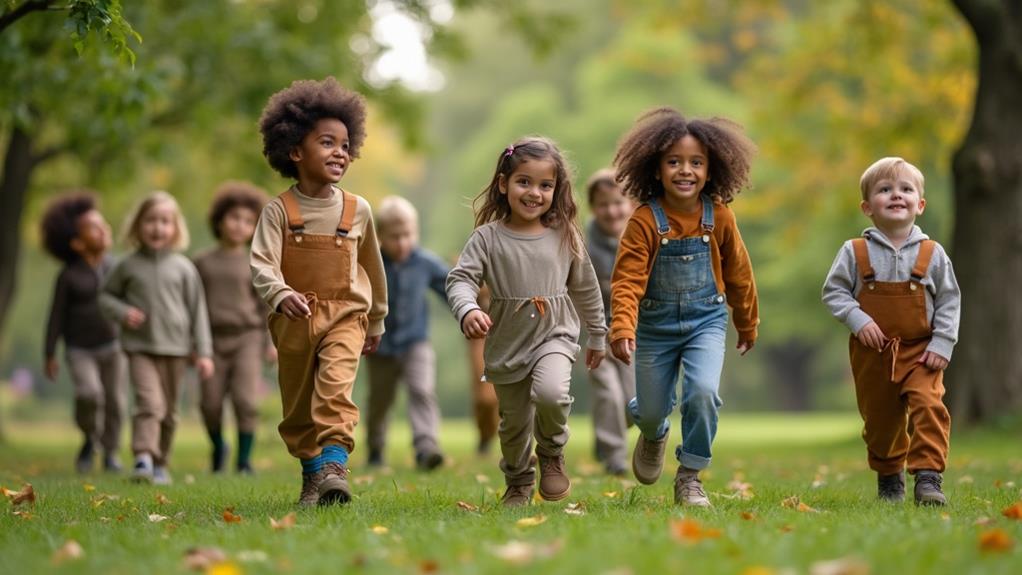
In today's fast-paced world, investing in sustainable fashion for your children can be a financially savvy choice. High-quality children's clothing made from durable materials means fewer replacements, leading to long-term savings and a reduced environmental footprint.
Here's why sustainable fashion is cost-effective:
- Durable Garments: High-quality clothes withstand wear and tear, ensuring they last longer.
- Long-Term Savings: Spending less on frequent replacements saves money over time.
- Versatile Investment: These garments can be handed down to siblings or resold, maximizing their value.
- Reduce Landfill Waste: Purchasing fewer, higher-quality items minimizes your contribution to landfill waste.
Brands specializing in sustainable fashion often provide repair services or incentives for recycling, extending each garment's life and decreasing future expenses. While the initial cost of sustainable clothing might be higher, its durability and versatility make it a wise investment. By choosing sustainable options, you're making a financially sound decision and positively impacting the environment. In the end, sustainable fashion is about making smart choices that benefit both your wallet and the planet.
Educating Kids on Sustainability
Teaching children about sustainable fashion helps them make eco-friendly choices and understand the environmental impact of fast fashion. Discussing textile waste and demonstrating how proper garment care can extend the life of their clothes fosters sustainable habits. Encourage participation in clothing swaps and educate them about eco-friendly materials to promote a culture of sharing and mindful consumption.
Teaching Eco-Friendly Choices
Understanding the environmental impact of fashion is crucial for instilling eco-friendly habits in children. Start by educating them about the 92 million tonnes of textile waste generated annually. Highlight the benefits of sustainable fashion, such as using organic cotton grown without harmful pesticides, to make them aware of healthier clothing options.
Engage your children in discussions about the importance of high-quality garments. Teach them that durable clothing can be passed down or reused, significantly reducing clothing waste over time. Introduce the concepts of recycling and donating old clothes to foster a mindset that values reusing resources and supporting a circular economy.
Empower your children to make informed choices by involving them in selecting eco-friendly brands. Look for certifications like GOTS or Fair Trade that guarantee ethical practices. This not only supports sustainable fashion but also encourages responsible purchasing habits.
Key Points:
- Discuss the environmental impact of textile waste.
- Promote the benefits of organic cotton.
- Emphasize the importance of high-quality, durable garments.
- Introduce recycling and donating old clothes.
Impact of Fast Fashion
Fast fashion's rapid turnover of trendy, inexpensive clothing significantly impacts the environment, a concept kids need to grasp. The industry's drive for constant new styles results in 92 million tonnes of textile waste each year. This promotes a throwaway culture that not only harms the environment but also diminishes the perceived value of clothing. For instance, producing a single cotton T-shirt requires 2,700 liters of water, underscoring the excessive resource consumption associated with fast fashion and highlighting the importance of choosing sustainable alternatives.
Educating kids on sustainability is crucial. Clothing production accounts for approximately 10% of global greenhouse gas emissions, so it is vital for children to understand this environmental impact. By teaching them values of responsible consumption, you empower them to make informed decisions, fostering more conscientious purchasing habits in the future.
| Impact | Fast Fashion | Sustainable Fashion |
|---|---|---|
| Textile Waste | 92 million tonnes annually | Significantly reduced |
| Water Usage | 2,700 liters per T-shirt | Lower consumption |
| Greenhouse Gas Emissions | 10% of global emissions | Much lower |
| Clothing Longevity | Short-lived, low-quality | Durable, high-quality |
| Environmental Impact | Negative | Positive |
Sustainable Habits Formation
Instilling sustainable habits in children from an early age lays the groundwork for lifelong environmentally conscious behavior. Teaching kids about sustainable fashion helps them understand the significant environmental impact of clothing production, with the fashion industry responsible for approximately 10% of global greenhouse gas emissions. By involving children in clothing choices and care, you can extend the lifespan of garments, align with slow fashion values, and reduce waste.
Educating children on the benefits of eco-friendly materials like organic cotton and hemp emphasizes the importance of choosing non-toxic options that are safe for their skin, reducing exposure to harmful chemicals and fostering a preference for high-quality clothes. Encouraging practices such as donating or swapping clothes cultivates a sense of community and responsibility, demonstrating the value of reusing and recycling to minimize textile waste.
To promote sustainable habits:
- Choose eco-friendly materials like organic cotton and hemp.
- Promote donating or swapping clothes to reduce waste.
- Opt for non-toxic options to ensure safe, high-quality clothes.
- Teach care and maintenance to extend garment lifespan.
Early education on sustainability nurtures a lifelong commitment to environmental stewardship, helping children appreciate nature and understand the impacts of their consumption choices on the planet.
Future Trends in Kids' Fashion

The future of kids' fashion is set to be greener and more inventive than ever. The market for eco-friendly children's clothing is expected to grow considerably, with a surge in sustainable options. Brands are increasingly turning to sustainable fabrics like organic cotton and recycled materials, ensuring that kids' clothes are both stylish and environmentally conscious.
Durability is also becoming a priority. By focusing on timeless designs, brands are creating clothes that last longer, allowing them to be passed down or resold, contributing to a more sustainable cycle. The rise of second-hand markets is reshaping how we consume kids' fashion, making it easier to find high-quality, sustainable clothes.
Rental services are gaining popularity, offering a practical solution for growing children who quickly outgrow their clothes. This approach reduces waste and provides access to a variety of sustainable options without breaking the bank.
Education and advocacy are essential in promoting these sustainable practices. As awareness grows, more families will prioritize eco-friendly choices, ensuring that the future of kids' fashion is as bright as it is green.



